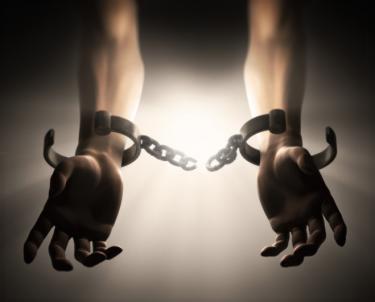I'm studying The Catcher in the Rye by J.D. Salinger in my English class at the moment, and one of the things that annoys me about the book is that there's not plot. Nothing. Zip, zilch, nil. The whole thing is made up of the ramblings and insight of a delusional 50's teenager as he goes about his life.
Sure, it's packed with fantastic symbolism and great characterisation, and there's even a chain of events. But the story is so lacking that I wouldn't dare call it a story at all.
Truth is, a chain of events does not make a story, and nor does simply change. There are changes all through The Catcher in the Rye, for example when the protagonist, Holden, runs away to New York from his prestigious boarding high school (which he hates). But this change isn't meaningful, and nor are any of the others - which is a problem considering that it is meaningful changes that create story.
For a change to be meaningful, it must be expressed in terms of a story value. Story values do not refer to virtues or morals, although they include them. Robert McKee writes in Story* that, rather, they are "the universal qualities of human experience that may shift from positive to negative, or negative to positive, from one moment to the next."
This means that one or more themes, if you like, must switch to their opposite. For example, freedom/captivity (positive/negative) is a story value, and can be used to create meaningful change when a character's experience moves from one side of the coin to the other - when they are freed from captivity or captured from freedom. Love/hate is also a story value, and so is justice/injustice, loyalty/betrayal, peace/unrest, hope/despair ...
... You get the picture.
So, if we look back at the change of Holden leaving his school, what story value switch(es) could we possibly apply? Loyalty to betrayal? There was never loyalty in the first place. Self-righteousness to guilt? He's always felt guilty about his lack of motivation in school. Captivity to freedom? Holden probably sees it this way, but reader doesn't buy it. After all, Holden's cynical perspective is not exclusively directed towards his school, but rather towards the whole world. So while he remains within his own mind, he'll never be free.
Hm. No meaningful change there.
The point is, in every scene of every good story there will always be a reversal in one or more story values. If not, why is the scene there? What does it achieve? Like all the scenes in The Catcher in the Rye, it may be exposition and character perspectives. But these can be worked into scenes that involve meaningful change. It may be difficult, but it's not impossible.
And finally, I'll leave Robert McKee with the last word, because he is pretty much a whole bunch of awesomesauce rolled into a ball of more awesomesauce: "No scene that doesn't turn. This is our ideal."
*There's a reason why I mention this book so often in my posts. Seriously, it's the best $35 I've ever spent.
Sure, it's packed with fantastic symbolism and great characterisation, and there's even a chain of events. But the story is so lacking that I wouldn't dare call it a story at all.
Truth is, a chain of events does not make a story, and nor does simply change. There are changes all through The Catcher in the Rye, for example when the protagonist, Holden, runs away to New York from his prestigious boarding high school (which he hates). But this change isn't meaningful, and nor are any of the others - which is a problem considering that it is meaningful changes that create story.
For a change to be meaningful, it must be expressed in terms of a story value. Story values do not refer to virtues or morals, although they include them. Robert McKee writes in Story* that, rather, they are "the universal qualities of human experience that may shift from positive to negative, or negative to positive, from one moment to the next."
This means that one or more themes, if you like, must switch to their opposite. For example, freedom/captivity (positive/negative) is a story value, and can be used to create meaningful change when a character's experience moves from one side of the coin to the other - when they are freed from captivity or captured from freedom. Love/hate is also a story value, and so is justice/injustice, loyalty/betrayal, peace/unrest, hope/despair ...
... You get the picture.
So, if we look back at the change of Holden leaving his school, what story value switch(es) could we possibly apply? Loyalty to betrayal? There was never loyalty in the first place. Self-righteousness to guilt? He's always felt guilty about his lack of motivation in school. Captivity to freedom? Holden probably sees it this way, but reader doesn't buy it. After all, Holden's cynical perspective is not exclusively directed towards his school, but rather towards the whole world. So while he remains within his own mind, he'll never be free.
Hm. No meaningful change there.
The point is, in every scene of every good story there will always be a reversal in one or more story values. If not, why is the scene there? What does it achieve? Like all the scenes in The Catcher in the Rye, it may be exposition and character perspectives. But these can be worked into scenes that involve meaningful change. It may be difficult, but it's not impossible.
And finally, I'll leave Robert McKee with the last word, because he is pretty much a whole bunch of awesomesauce rolled into a ball of more awesomesauce: "No scene that doesn't turn. This is our ideal."
*There's a reason why I mention this book so often in my posts. Seriously, it's the best $35 I've ever spent.






.png)

